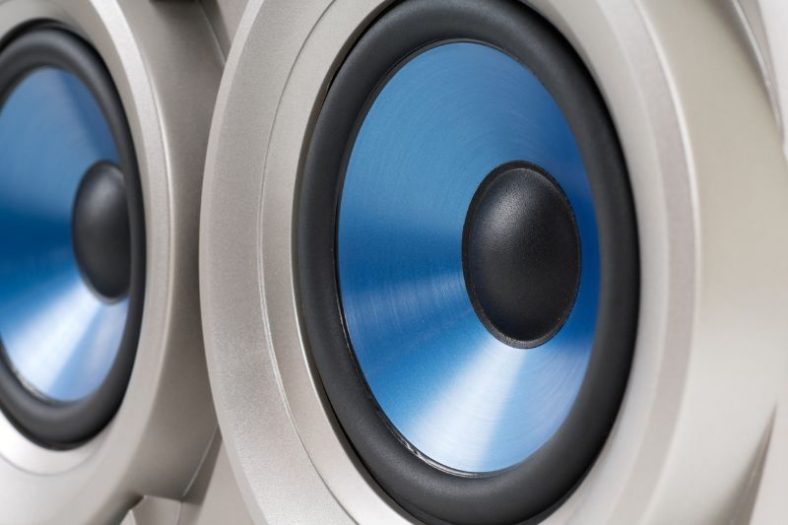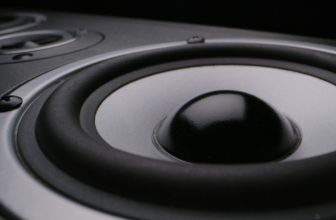Speakers vs Subwoofers – What’s the Difference?

There is a big difference between speakers and subwoofers. Speakers are designed to handle mid and high audio frequencies, while the subwoofers are designed to handle the low end of the frequencies, usually around 20 – 200 Hz.
If you’re planning to build your home theater or set up an amazing system in your living room, you’ve probably asked yourself if you need a subwoofer in your setup. And the short answer is yes. Without subwoofers, you are missing tons of low frequencies that add up to the whole experience. Think of explosions if you’re watching movies, bass in music, or any other sound effects that are producing a lot of low frequencies.
Contents
What is a Speaker?
Speakers have an easy job that doesn’t require much power. Producing frequencies from 20 Hz to 20,000 Hz, they are not powerful enough to handle only the low range of frequencies. Although they are brilliant at what they do, all of their low frequencies usually sound muted and sometimes not even audible.
Speakers can also be either passive or active. What this refers to is if they have a built-in amplifier. Active speakers have built-in amplifiers, and passive speakers do not. There are many differences between them, but for now, you only need to know that active speakers require an external power source, whereas passive ones do not. Also, both types have one goal, and that is to sound as best as possible with the whole system.
Pros
Price. Speakers generally don’t cost as much as subwoofers, as they don’t require a lot of power for turning on and off, which is a big deal for subwoofers.
Independent. Unlike subwoofers, speakers mostly come in pairs, and you’ll be pretty much good to go. Sure, you’ll miss some of the bass sounds, but in general, they will sound good by themselves.
Cons
Low-end frequencies. Speakers are not capable to produce good quality bass sounds by themselves, and that’s the main reason why you would want to pair them up with a good subwoofer.
What is a Subwoofer?
A subwoofer is a type of speaker that is only focused on producing high-quality bass sounds, or low frequencies. As I’ve mentioned before, the frequencies of a subwoofer generally range from 20 – 200 Hz, but many professional subwoofers are below 100 Hz.
Just like normal speakers, subwoofers can also be passive or active, but beyond that, there are many differences between subwoofers. The main variants and specs to look for are efficiency, power handling, cost, size, distortions, and much more.
Pros
Sound quality. The overall sound quality is greatly improved because the speakers can focus on producing mid and high frequencies, while the subwoofer takes care of the low frequencies.
Reduces strain on the audio system. This kind of ties up with the first pro, but with an active subwoofer, you reduce the strain on the other speakers, so they don’t have to deal with low frequencies, which require the most power.
Cons
Cost. Although they improve the sound quality by a large margin, subwoofers are typically much more expensive than normal speakers.
Quality. Many brands try to build a subwoofer for an affordable price, but some models are not very well made.
Dependant. Unlike normal speakers, you cannot play and hear almost anything if you just play that on a subwoofer. Well, technically you can, but it will sound like you’re playing it from underwater.
Differences and Similarities Between Speakers and Subwoofers
There are many differences and similarities between speakers and subwoofers, and although I touched up on the main one, which is the frequency range, there are others.
For example, positioning a subwoofer isn’t as complicated as positioning your speakers. With a little bit of effort, and some trial and error, you can easily find the perfect position for a subwoofer in your room. Speakers, on the other hand, need a pretty balanced position to be able to produce the highest quality of sound.
There is also a big difference when it comes to the design between the two. The construction of the subwoofer is very different from a speaker because they generally need a lot more power than normal speakers.
Working in Conjunction
The best way to experience music or any type of sound is when you set up your speakers to work in conjunction with your subwoofer. The sound quality will improve by a large margin.
If you are planning to get a subwoofer for your home theater system, to get optimal sound performance, there is no doubt that you will increase the quality of the sound by a lot. Home theaters are amazing examples of how you would benefit from a subwoofer.
Proper positioning helps reduce a lot of phasing when setting up the system. Phasing is what we use to measure how fast the audio reaches the listener, and if you are having some phasing issues, you might want to move your subwoofer further or closer to you, depending on how the sound reaches the listener.
Can a Subwoofer Be Used as a Primary Speaker?
Unlike speakers, subwoofers cannot be used alone, or as a primary speaker. They are designed to only tackle the low frequencies and only the low frequencies. I imagine that you can only power the drivers on the subwoofer, but the listening experience will be bad.
Subwoofers are generally an addition to your speaker setup that enhances your listening experience and is not a good idea to use them as a primary speaker.
Does a Subwoofer Improve the Sound Quality and Experience?
When you add a subwoofer to your speaker setup, you will almost immediately hear an improvement in audio quality. To experience audio the best way possible, which means to hear all the frequencies as the audio engineers have mixed, you will need speakers that can support all frequencies, and frankly, no matter how high quality of speakers you have, they are not powerful enough to handle the low frequencies.
Enter, subwoofers. With correct settings, subwoofers will take over any frequencies under 120 Hz (as an example), so that the speakers don’t have to try and produce those frequencies. Still, even then, their only job is to try to keep up with the subwoofer.
What Makes a Good Subwoofer and How to Test it?
Build quality, audio specifications, design, and much more, all factor into the quality of a subwoofer. Unfortunately, there are a lot of brands that try to manufacture cheaper subwoofers that just don’t have enough power to drive them. Typically the smallest subwoofer you can get is 300W, and after that, it only goes uphill.
Even if you get a good subwoofer, placement will be crucial to getting an amazing sound. You need to make sure that the subwoofer has enough room, or isn’t blocked by anything in your home, so it can reach the listener without any interruptions.
As for testing the subwoofer, you want to play some bass-heavy songs, or even better, sound effects, such as explosions and lightning. The designed sound effects for movies typically have a lot of low frequencies to enhance that cinematic viewing experience.
Conclusion
There are a lot of differences between speakers and subwoofers, and you can only realize that once you’ve heard the difference between audio playing with and without a subwoofer. While the speakers are brilliant at playing mid and high frequencies fine, they do lack the horsepower to produce low frequencies and that’s why subwoofers are an amazing addition to any setup, and they only enhance the whole listening experience.





